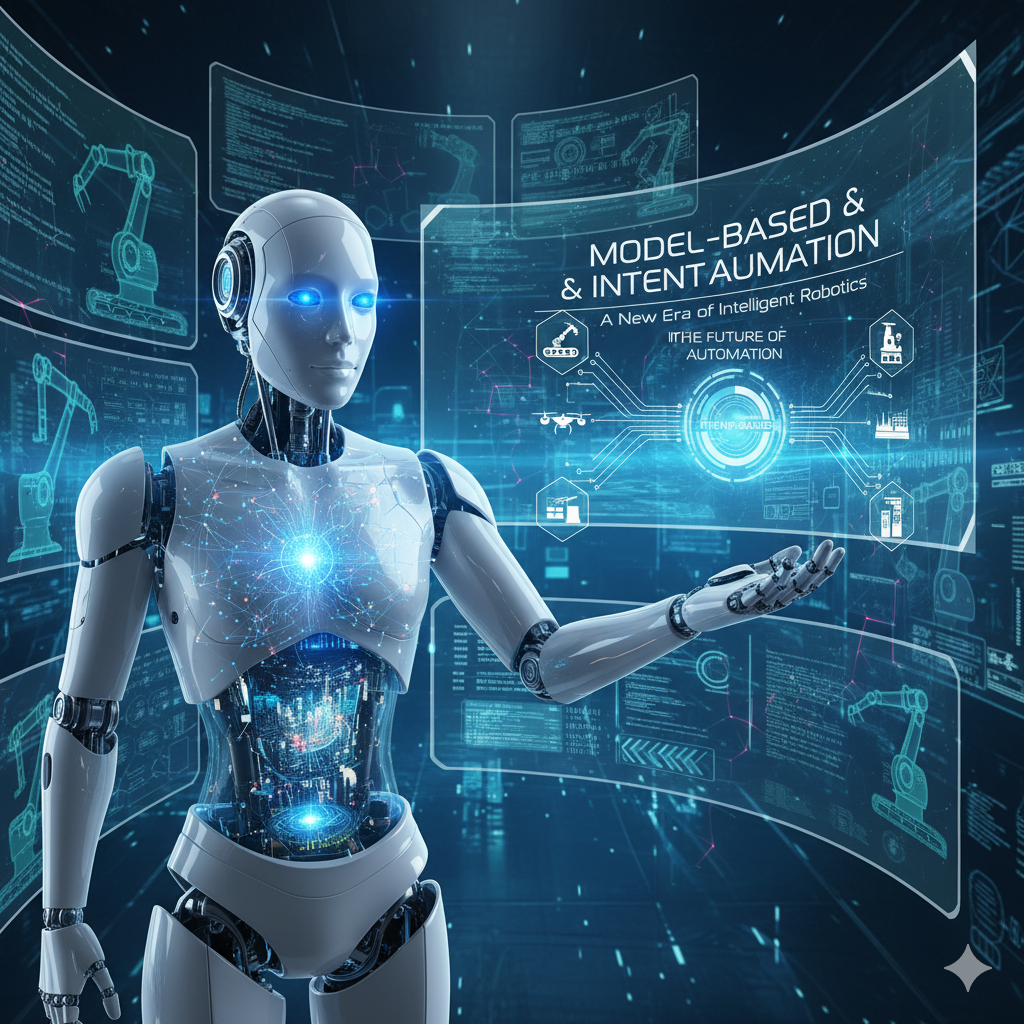Robots and automation get smarter each year. They’re not just machines following set instructions anymore. Now, with Model-Based Automation and Intent-Based Automation, robots can grasp goals, map out actions, and adjust when situations change.
These two methods are transforming automation and robotics in factories, warehouses, hospitals, and even homes.
📌 What’s Model-Based Automation?
Model-based automation involves robots using a digital model (also known as a digital twin) of their work environment or process.
- The model serves as a map for the robot.
- When something shifts, the robot compares it to the model and tweaks its actions.
✅ Example: A factory robot uses a digital model of the assembly line. When a part isn’t where it should be, the robot can spot it and finish the job anyway.
Why it’s helpful:
- It’s more precise and dependable
- It spots mistakes fast
- It cuts down on wasted time and expenses
📌 What does Intent-Based Automation mean?
Intent-based automation focuses on grasping human goals rather than needing detailed instructions.
- The human tells the robot what they want such as: “Sort these boxes by size and stack them.”
- The robot works out the steps: measure sizes, group them, and stack them right.
✅ Example: In a warehouse, a worker tells a robot, “Move items to the shipping area.” The robot plans the best route and gets the job done.
Why it’s helpful:
- People can talk to robots
- It cuts down on time (no need for detailed programming)
- It works well when things change
🚀 The Importance of These Methods
Old-school robots can’t handle changes. But with model-based and intent-based automation:
- Robots can adjust when real-world situations shift.
- People just set goals, and robots handle the tough stuff.
- Companies save time and money.
🏭 Where Can We Put This to Use?
- Factories → Robots adapt to new product designs.
- Warehouses → Robots pick, move, and pack items by grasping worker intent.
- Healthcare → Surgical robots help doctors with accuracy.
- Smart Homes → A robot cleaner gets, “Clean the living room,” and completes the job.
📝 Final Thoughts
Model-based and intent-based automation have an impact on making robots brighter and more useful. Rather than just following commands, robots can now reason, adjust, and team up with humans.
From factories to homes, these breakthroughs have an impact on the next big leap in automation. The future isn’t just about machines doing jobs—it’s about machines understanding and achieving goals
